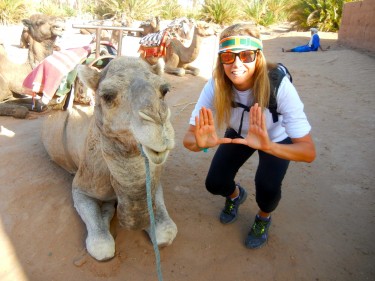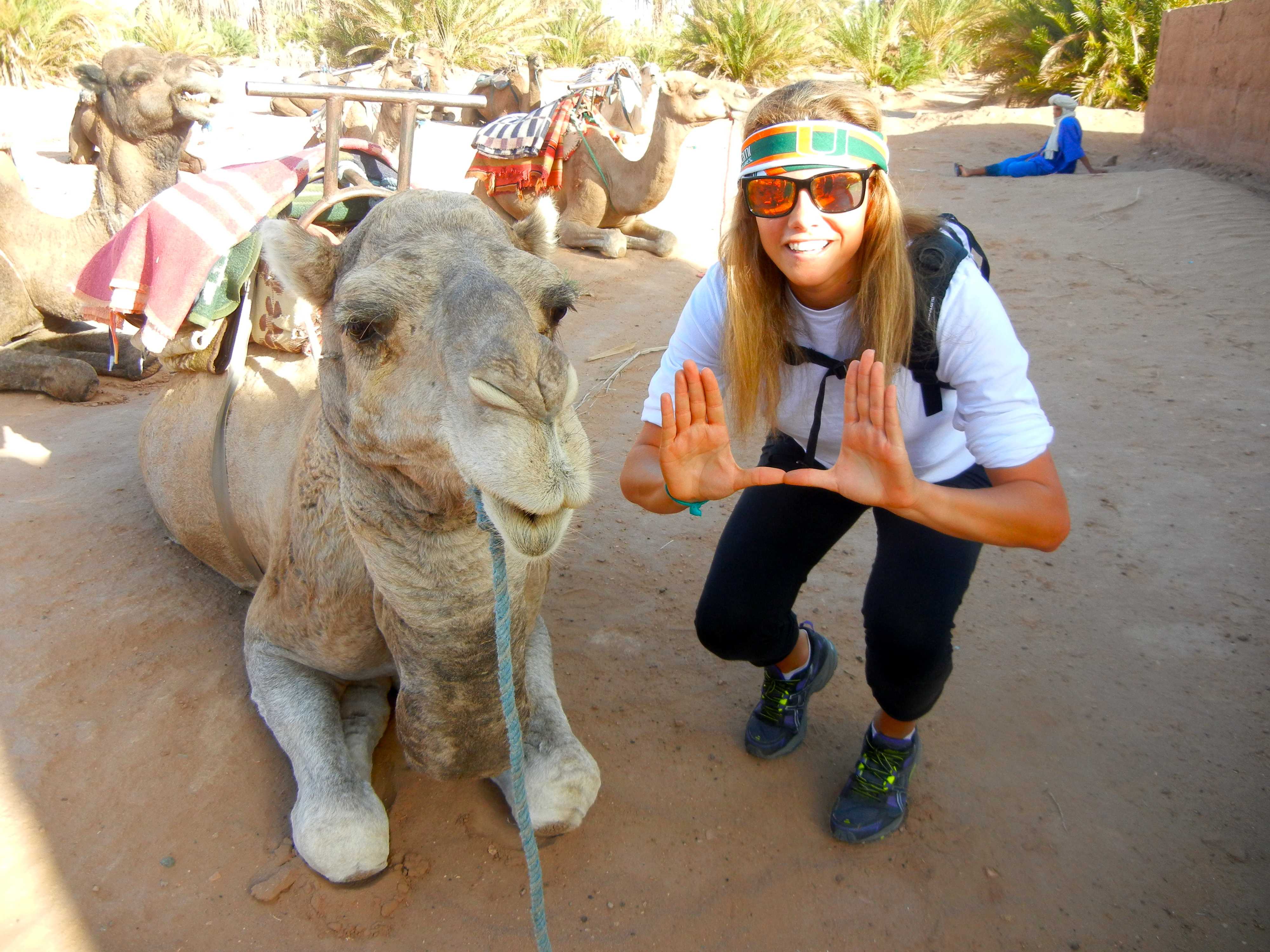The MV Explorer has officially left Europe and has made it to its first African port, Morocco! Morocco was a whirlwind of new sounds, smells, sights and tastes. On the first day, we left the ship in Casablanca and made our way to Marrakech, navigating streets (both paved and unpaved) that were a bustling mixture of trucks, motorbikes and donkeys pulling carts stacked triple their size.
We kept our eyes peeled as we passed families of four on one moped, mules with carriages and women fully draped in either burkas or headscarves. Our charismatic tour guide, Mohammed, gave us a crash course in the city of Marrakech as we tried to grapple with the oncoming culture shock.
Over the course of our stay, we ate traditional Moroccan meals consisting of vegetables, meat served in a tangine (a cone-shaped terra cotta piece), melon and traditional mint tea. As good as it tasted it at the time, somewhere along the line the food became contaminated.
Sixty people on my camel trek (including myself) fell sick and were quarantined for a day or so once we returned to the ship. Luckily, our unforgettable four days in Morocco was worth the aftermath.
On our journey to the Sahara, our bus weaved through the winding roads of the High Atlas mountains. Each curve displayed a stunning view of the red mountains and some of the small Berber villages built into them. About half of Morocco’s population is Berber (which are the more nomadic villages) and the other half is Arab and typically lives in the cities. As our driver negotiated hairpin turns and curves, he also had to yield to mules and mountain goats.
That night, we enjoyed traditional dinner and dancing in the courtyard of a Kasbah, which is a structure originally designed to house multiple families, but this one is now used as an event hall. We woke up early the next morning to make the final trek to the Sahara.
 Our bus pulled up alongside 94 camels whose dusty yellow coats nearly blended in with the sand. After helping us wrap our turbans to protect our heads and eyes from the sun, and situating each of the 90-plus SAS students on the field program up on to the awaiting camels, the Berber men who were leading us instructed the camels to stand.
Our bus pulled up alongside 94 camels whose dusty yellow coats nearly blended in with the sand. After helping us wrap our turbans to protect our heads and eyes from the sun, and situating each of the 90-plus SAS students on the field program up on to the awaiting camels, the Berber men who were leading us instructed the camels to stand.
The wind made rippling waves of sand in the dunes as we made our way through the desert. We were in awe of our surroundings. It seemed that the further we went, the higher and more dramatic the dunes became. We stopped for a break and a girl I was with asked one of the men to take a picture of us. He faced the lens toward himself, he did not know how to operate a camera. It was then when I realized just how many of them had not been exposed to technology.
We rode the camels for around 90 minutes, enjoying the serenity of the Sahara and doing our best to stay with the awkward motion and natural lurching of our camels’ gait. We reached our nomad camp—tents made out of colorful tapestries set up in two large circles. We were greeted with hot mint tea (not the most refreshing after being out in the desert but delicious nonetheless), and then made our way up the steep sand dune to watch the sun set over the Sahara.
It was undoubtedly the most beautiful sunset I have ever seen. The sky looked like it was on fire. We were in awe of its flames, the silky soft sand and our camels that were set loose in the camp area to nibble on any limited vegetation they could find. It was surreal to be surrounded by such beauty and good friends.
That night the sky was completely clear. The 94 of us lay in the center of the camp and stargazed as one student pointed out constellations and planets that seemed so close we could touch them. We ended our night dancing with the villagers around a bonfire.
The next morning we rose to watch a spectacular sunrise, then quickly got back on our camels to trek back to the buses before the sun got too powerful.
We headed back to Marrakech, and the next morning explored the medina, which is the main marketplace. I had never experienced anything like it: spices, tapestries, clothes, lanterns, leather bags, goat-fur shoes, pottery, animal hides, soccer jerseys, rugs, oils, nearly anything imaginable.
It overwhelmed every one of my senses: the smell of the spices, the donkeys being pulled down narrow corridors where people were walking, the sounds of traditional Moroccan music playing in the small stores.
Men called out to us to enter their stalls. Our admin team on the ship instructed us to offer half of what the person is selling the good for, and bargain from there. I was pretty unsuccessful in buying a pair of pants, but luckily it was just me and four other guys from SAS so I had one of them negotiate for me from there on out.
In the main square we watched snake charmers, henna artists and men with monkeys on leashes doing their best to take money from tourists. One snake charmer had more than 20 snakes laid out in front of him. He danced with a cobra dangling from his mouth and another in his hands.
On the bus ride back to Casablanca, we exchanged stories of haggling in the Medina and our favorite moments in Morocco. It was an incredible experience and has given us a lot to talk about for the next seven days we will be on the ship before arriving in Ghana.






